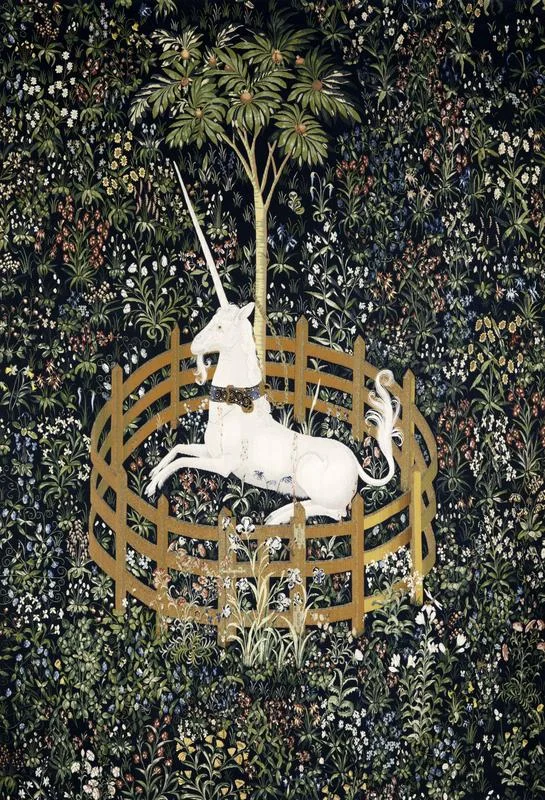The Unicorn Tapestries
I’m told I am immune to poison now because I touched a unicorn horn. It was an ethically harvested horn, one that came off by natural causes just like a baby tooth that comes off to make room for the unicorn’s second—and final—horn.
The unicorn is the national animal of Scotland and one of my favorite animals because I’ve only ever been able to imagine what it’s like, and I imagine it talking, doing magic, and having a benevolent disposition.
I’ve had Unicorn in Captivity as my phone screen for more than half a year now, meaning that other than myself it is the piece of art I have looked at the longest this year. It’s a unicorn with a collar and a chain attached to a pomegranate tree, encircled by a wood fence, to a background of plants and flowers that’s not too unlike Barack Obama’s portrait.
I actually didn’t know it was a pomegranate tree until I visited the Hunt of the Unicorn tapestry recreations at Stirling Castle in Scotland—I thought of it as more of a coconut tree. Reassuringly, one of its artists wrote that contrary to the accuracy in the other plants in the series, the pomegranate tree is “completely inaccurate.”
It turns out that a collar on a unicorn was supposed to mean it had been tamed, but that the collar was not secured and the chain did not connect to anything. The unicorn simply remained by choice and could retire if it chose to do so.
This is a nice way to see the thing of magic and beauty chained and enclosed in the tapestry. I like the thought that the unicorn chooses to remain attached to a symbol of fertility and prosperity, like it’s sacrificing itself to some greater duty — or choosing the safety of a small enclosure over the danger of roaming freely. I can’t tell though whether the unicorn’s chain really is unsecured.
The unicorn tapestries were made in the 15th century, but little is known about their first 180 years. In 1680 there’s record they belonged to a French duke. They were then looted in the French Revolution, recovered in the 1850s, and purchased by the Rockerfellers before they were given to the MET. The recreations in Stirling Castle took 13 years to make, and are now on display in the chambers. Long ago, said an attendant working at the castle, the lords and ladies would change out sets of ambiguous tapestries to keep speculation about meaning flowing.
Two common readings are of the Hunt as a religious story and the Hunt as a medieval love story.
Religious story
Men go on a hunt for a unicorn and find it dipping its horn in a stream to purify the water for the other nearby animals, like Christ redeeming man by taking on the world’s sins. The unicorn is pursued unsuccessfully, as it was thought that unicorns were so fast and fierce that neither man nor beast could tame them—only a maiden could. The hunters therefore get a maiden to enchant the unicorn and allow them to capture it. They kill it and take its horn. To me, this sounds like the death of childhood. In the last tapestry, The Unicorn in Captivity, the unicorn is alive again, enclosed and tied to a pomegranate tree. It represents the risen Christ the Unicorn in the garden of paradise.
Love Story
The unicorn is the lover and the maiden its beloved. The hunters are love. Tied to a pomegranate tree symbolizing marriage and fertility, the unicorn has been struck by love and bears the wounds on its back.
Notice the thistles, Scotland’s national plant. There are bluebells, carnations, columbines, and a dandelion. There’s also a frog among the flowers in the bottom right corner.
